site search
online catalog
FROCK COAT, SASH, EPAULETS AND SWORD BELT OF COLONEL AND BREVET BRIGADIER GENERAL ELI HOUSTON MURRAY, 3rd KENTUCKY CAVALRY
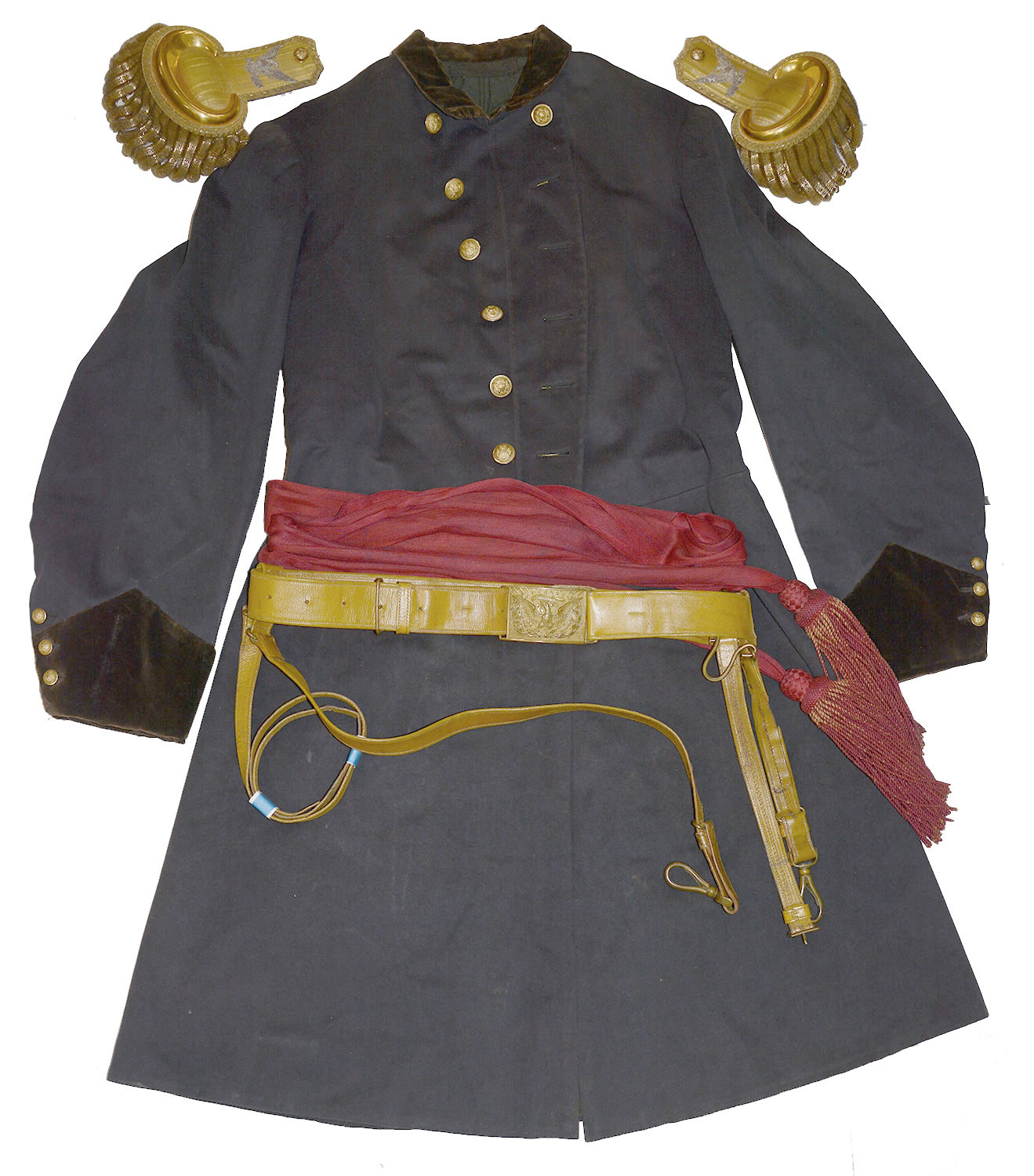
Hover to zoom

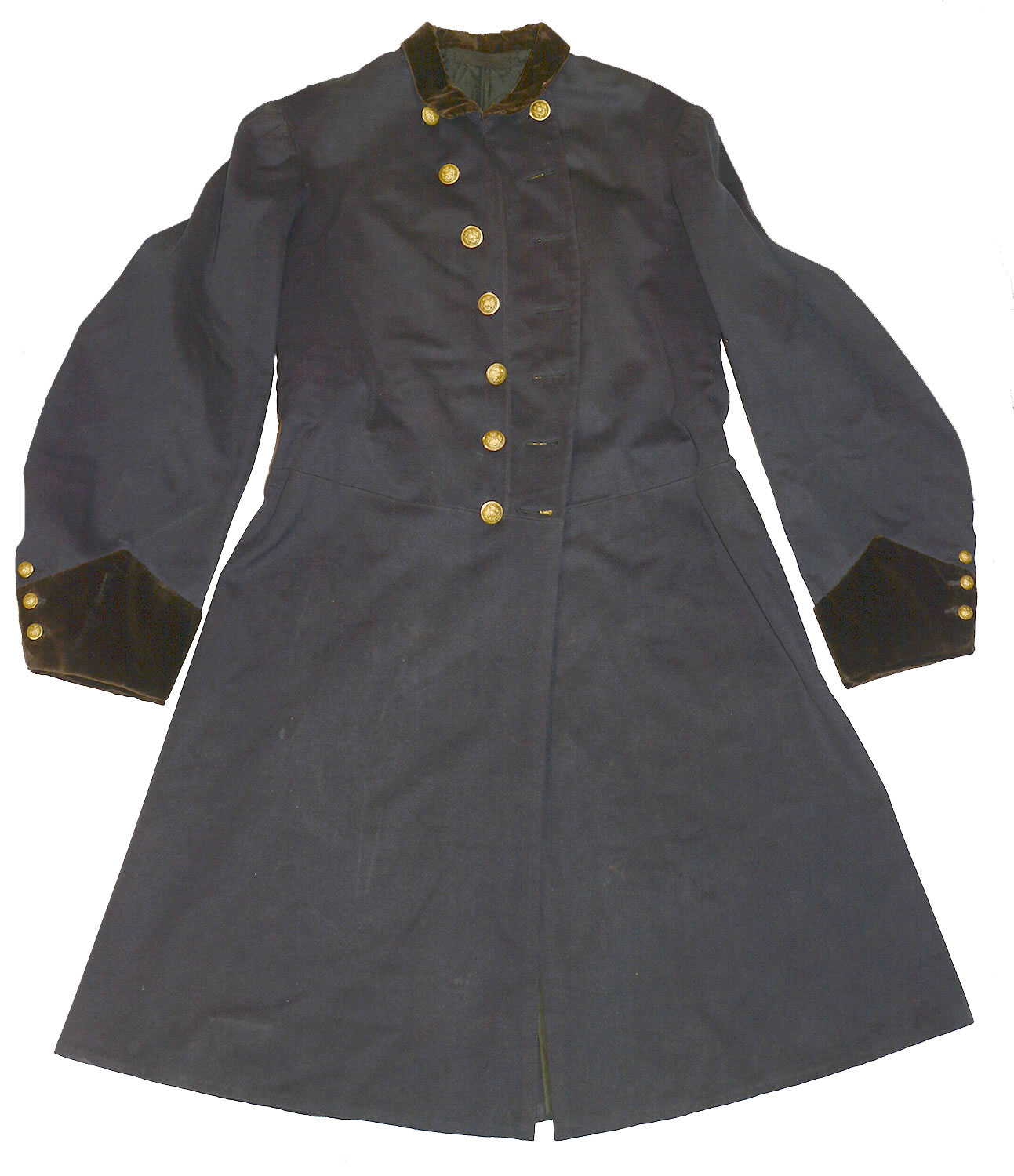
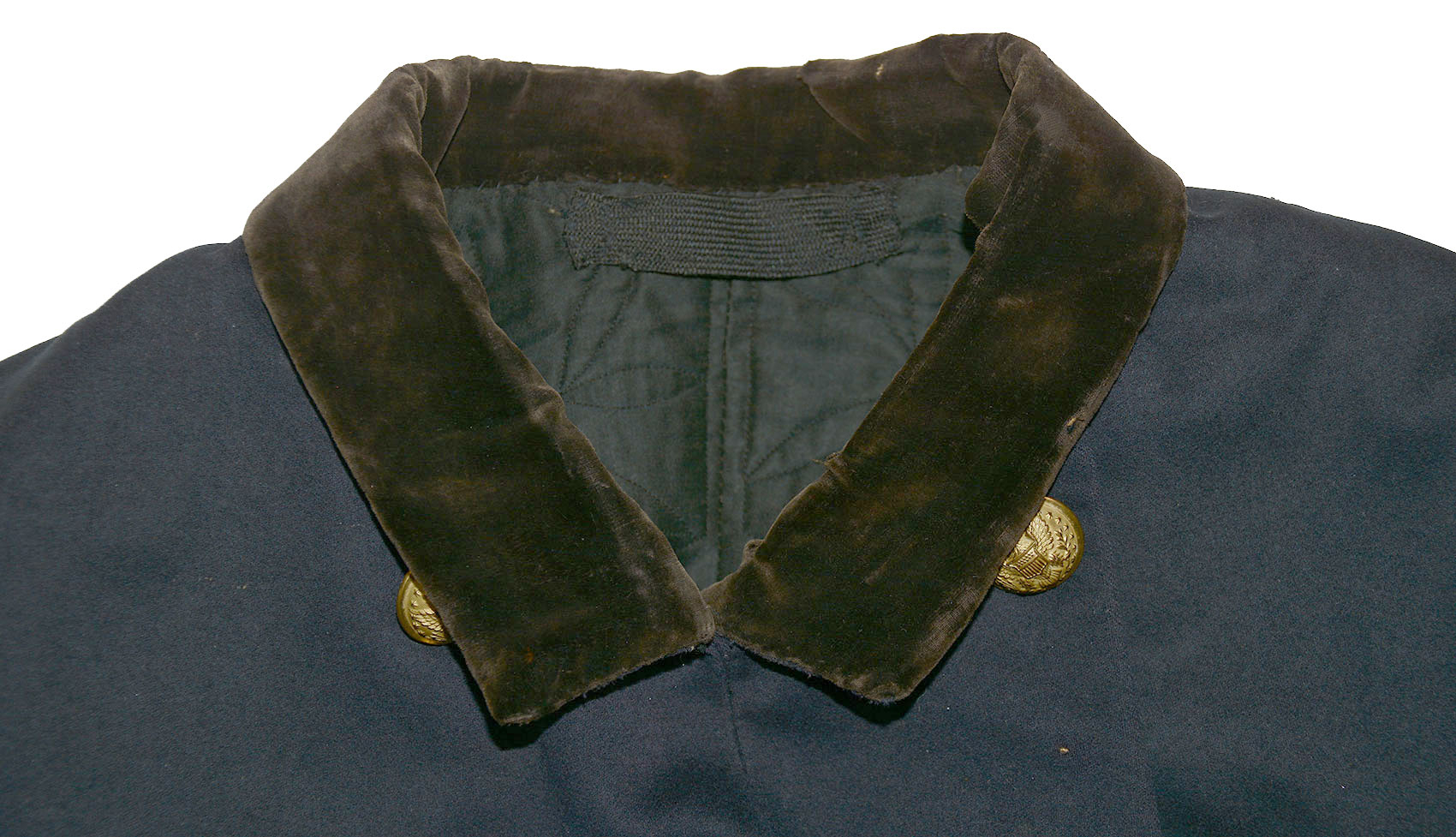
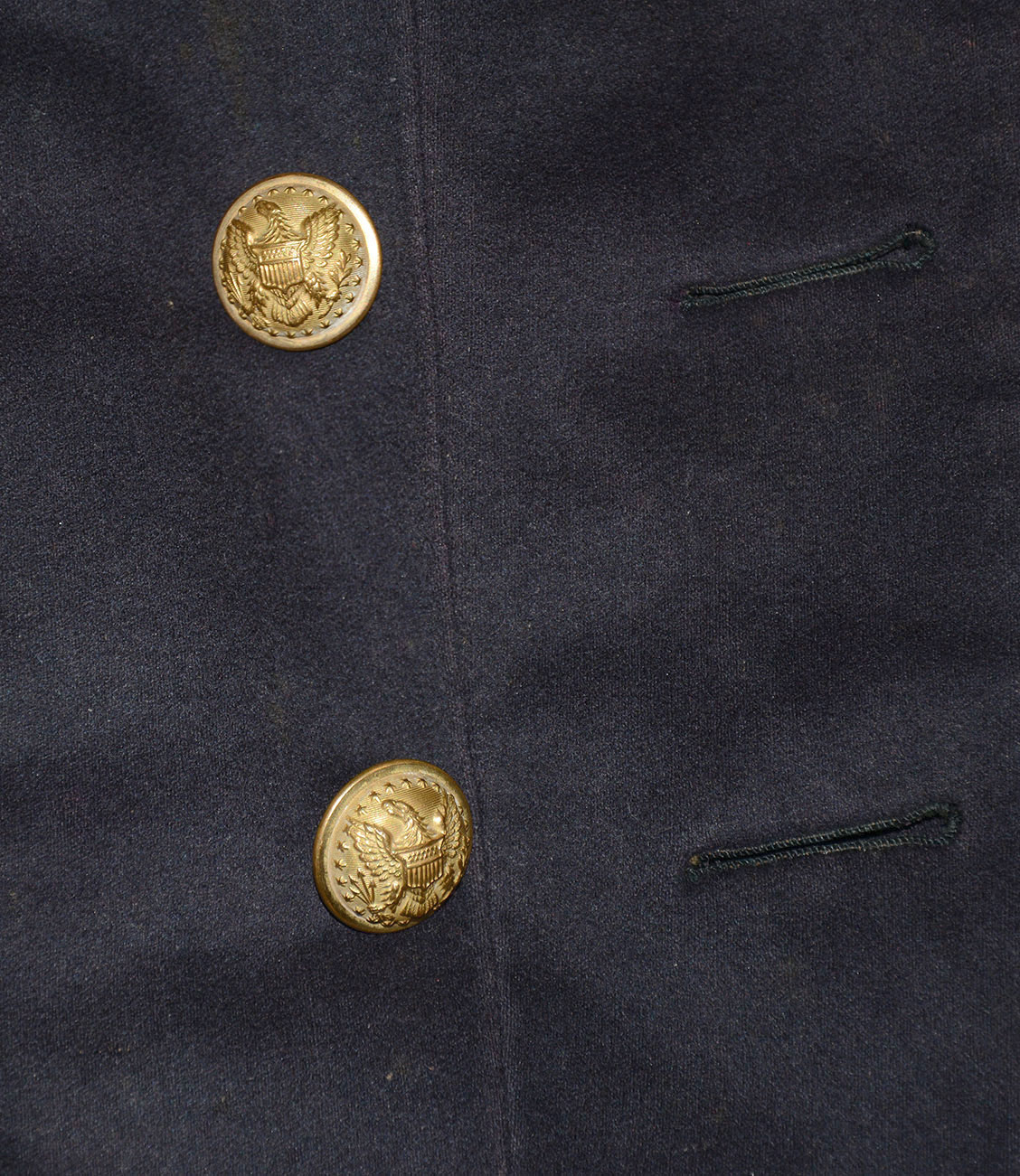
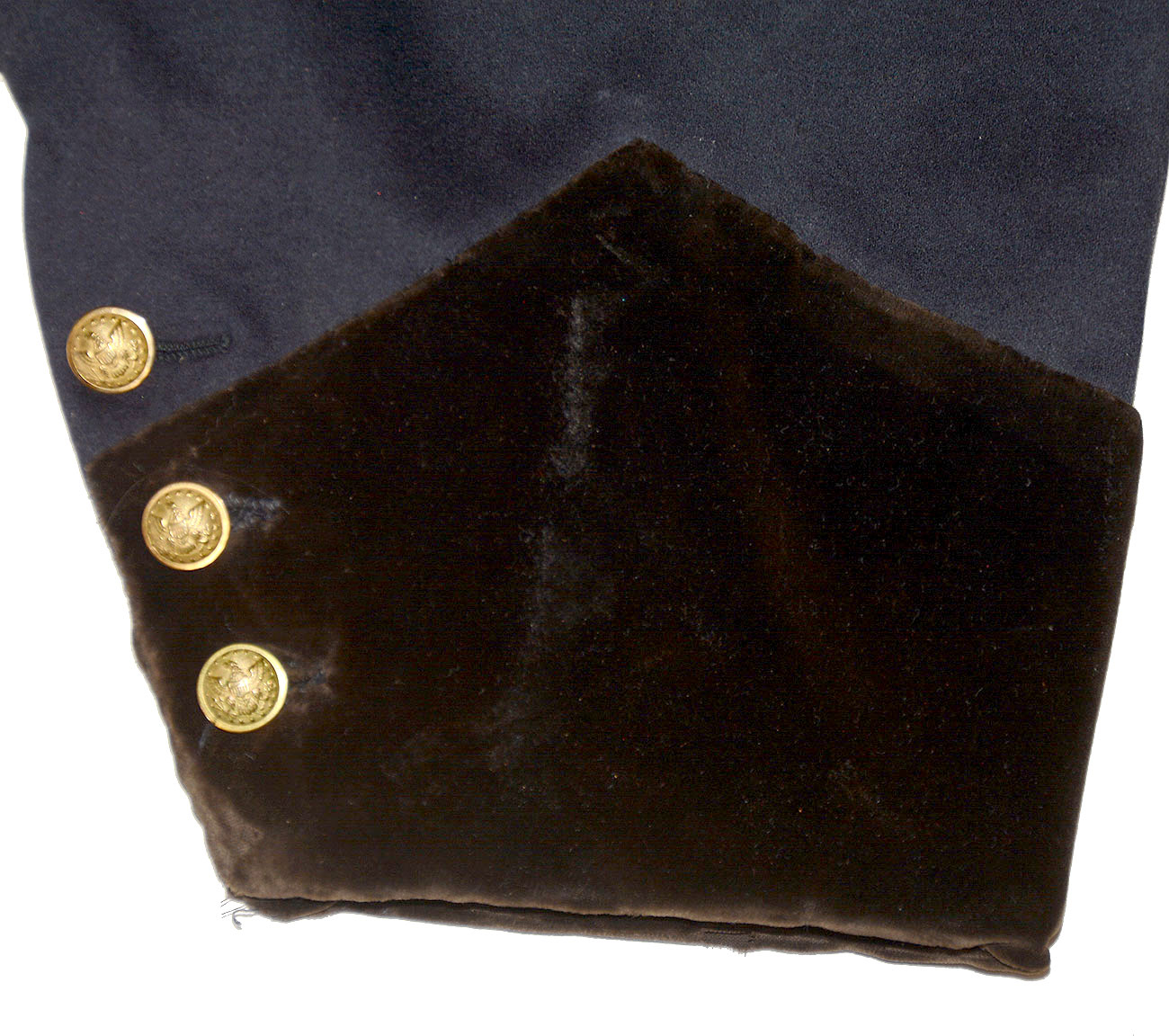
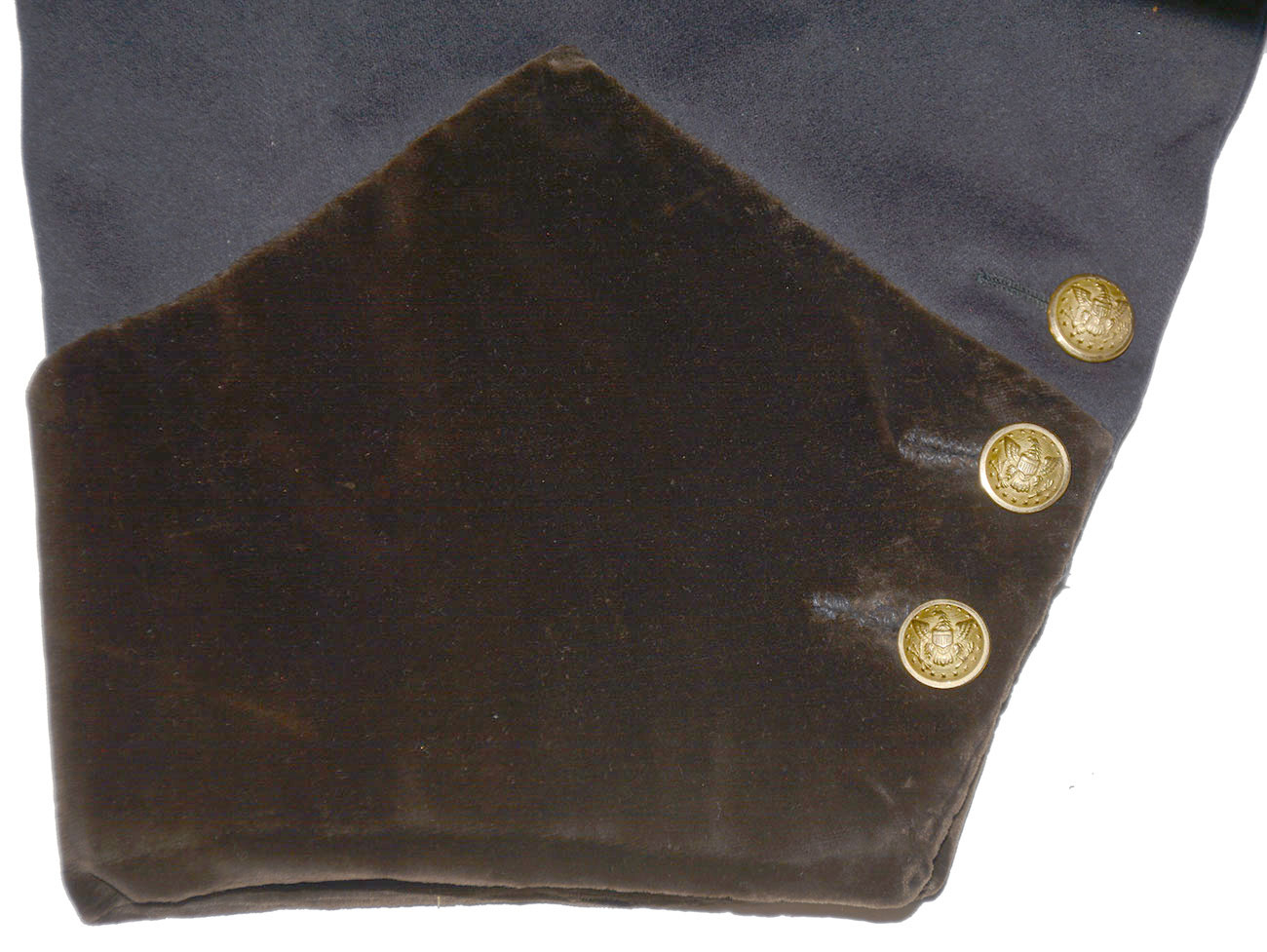
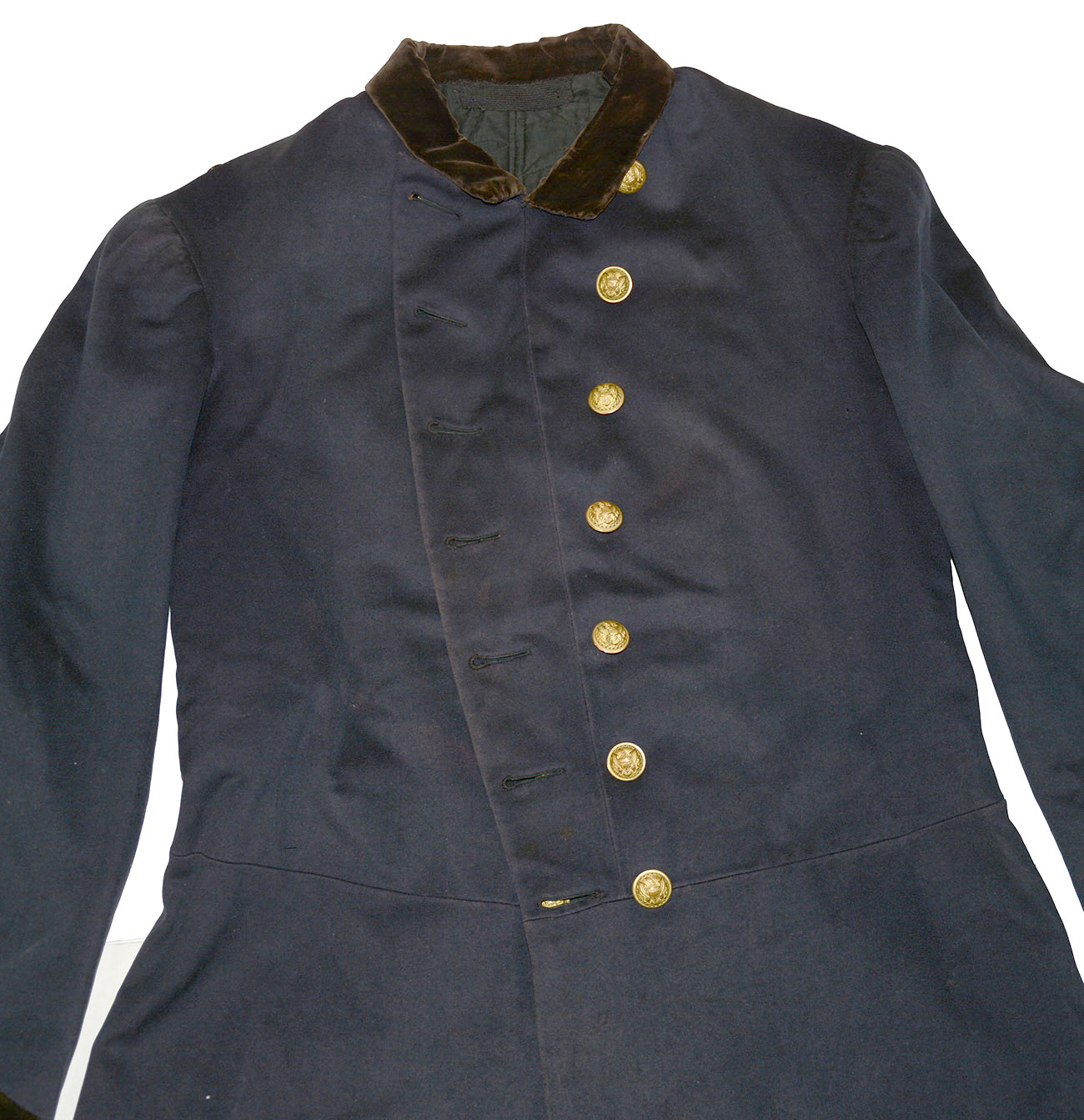
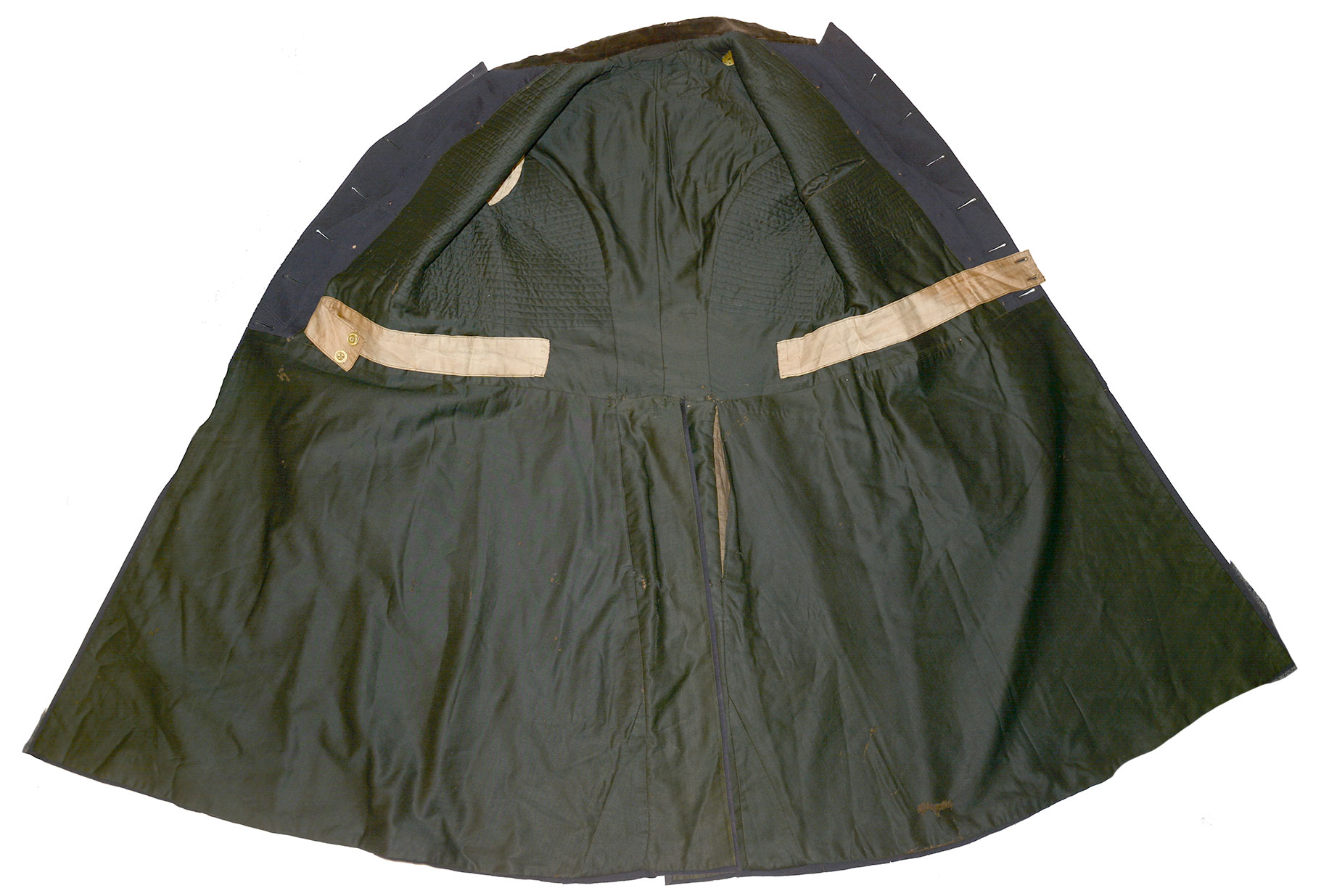

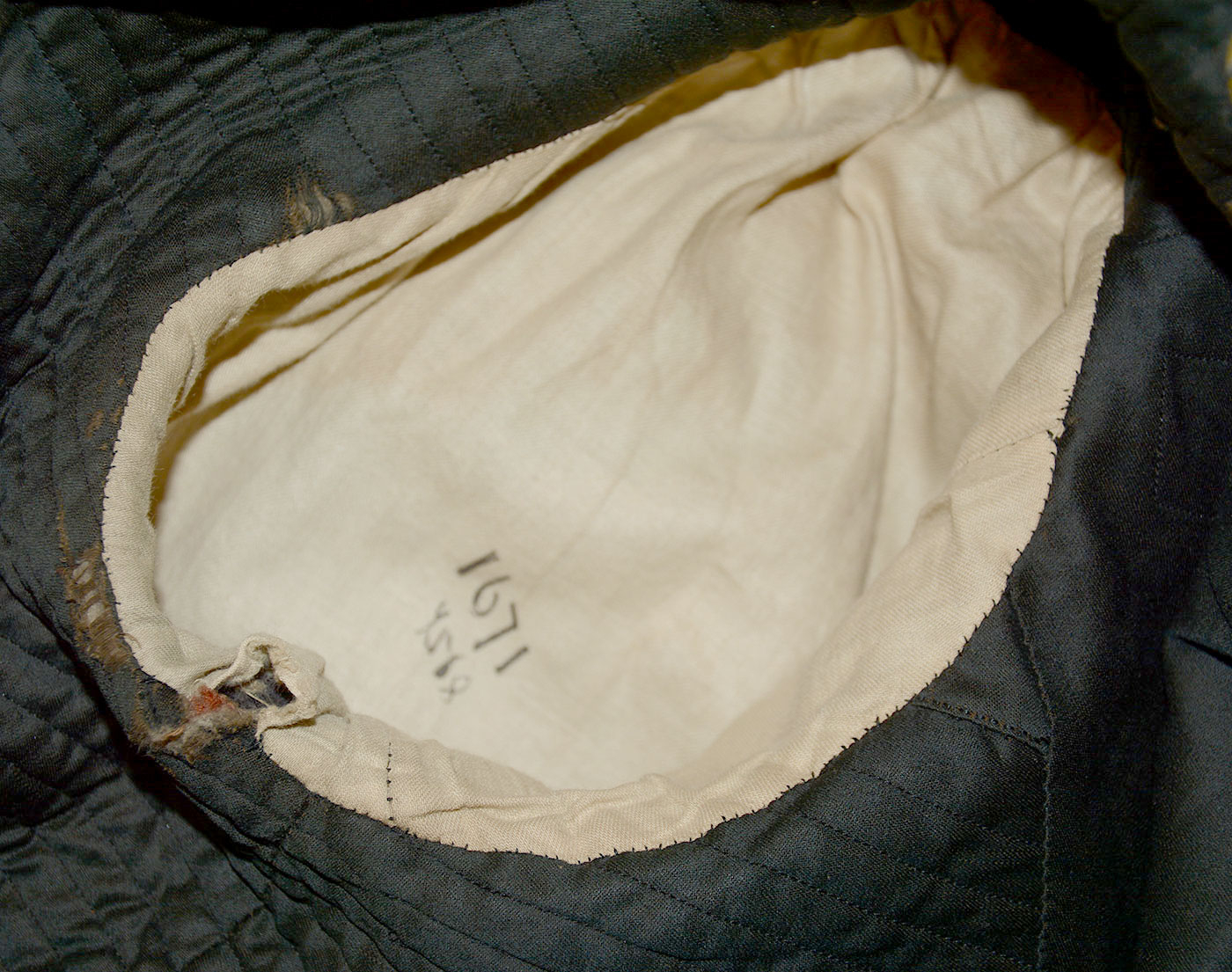
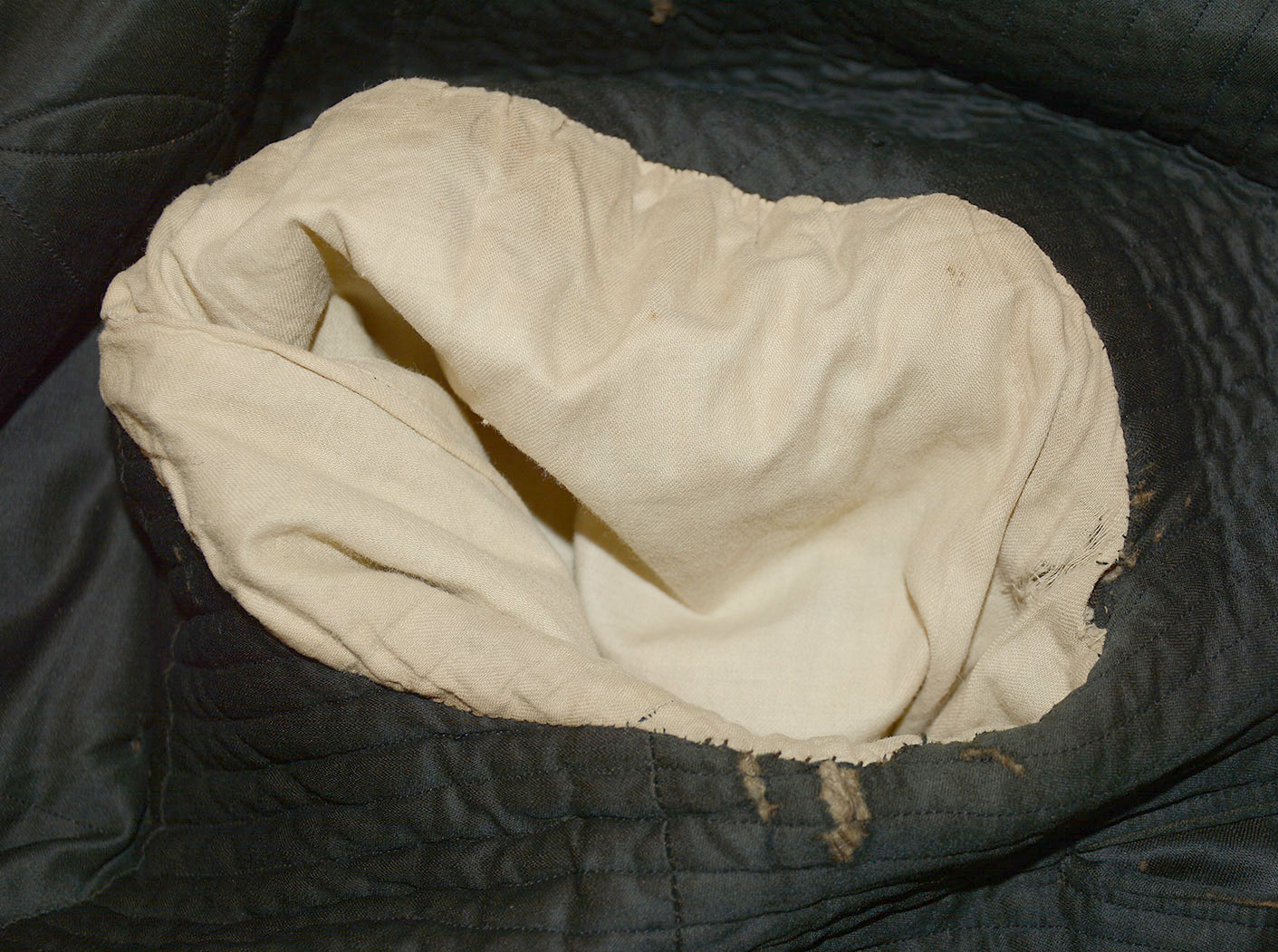


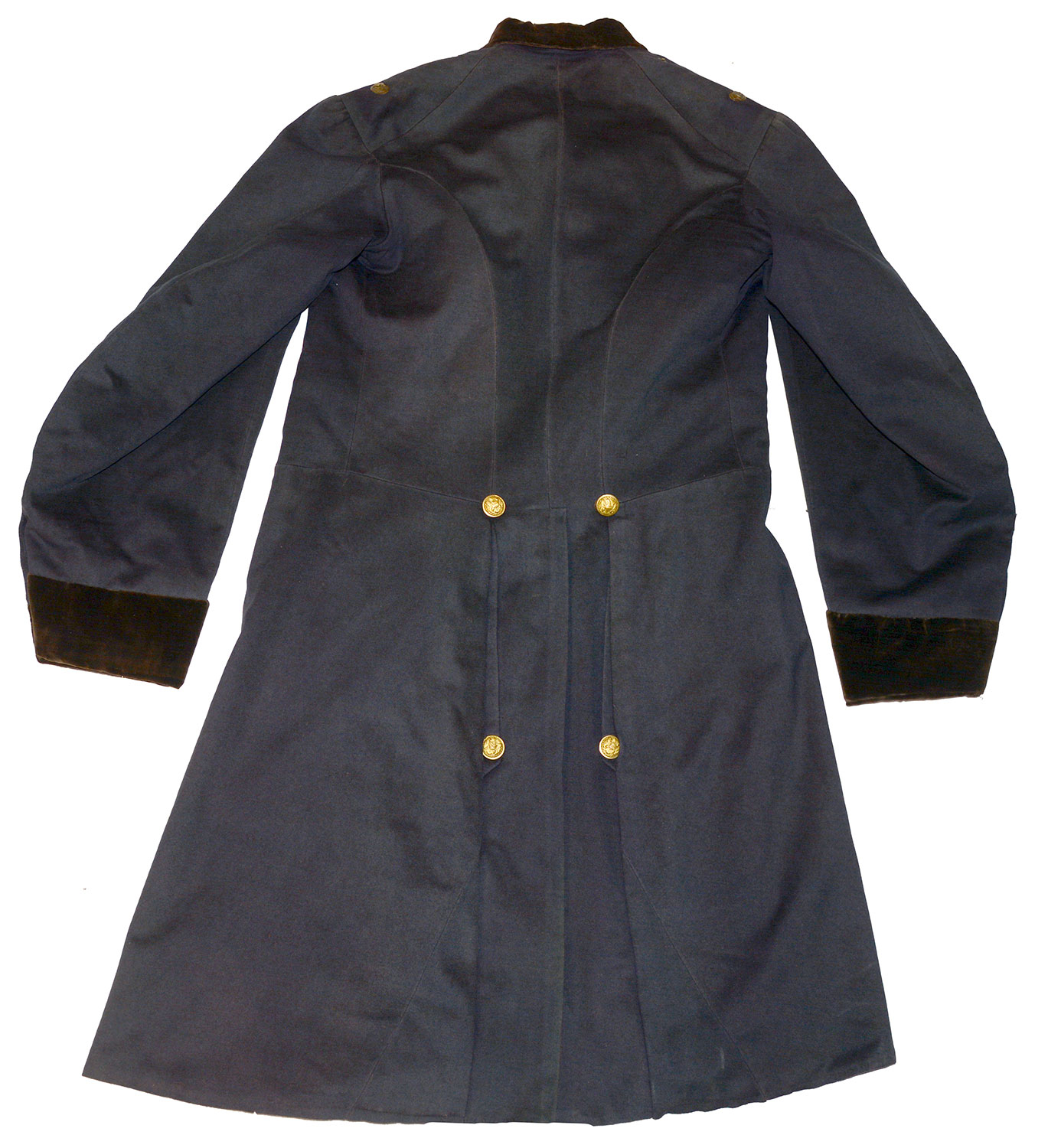
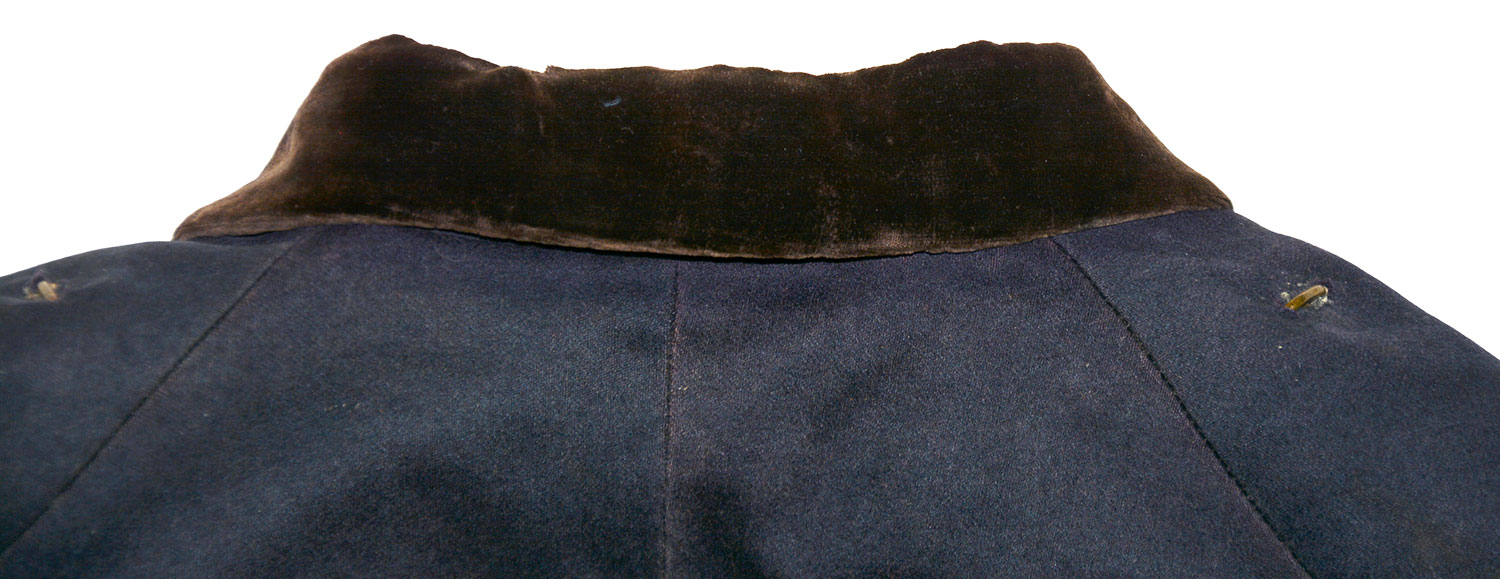
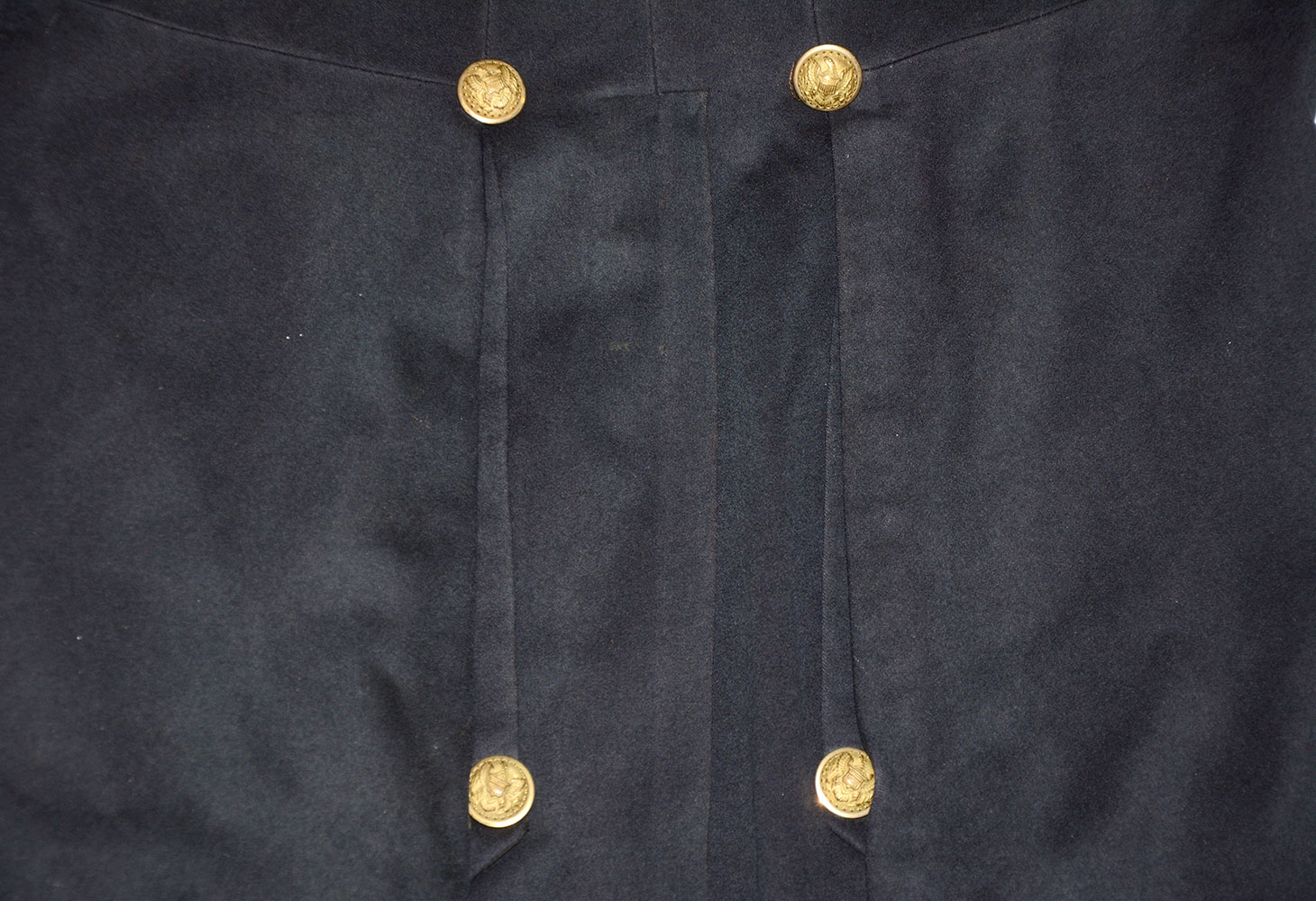
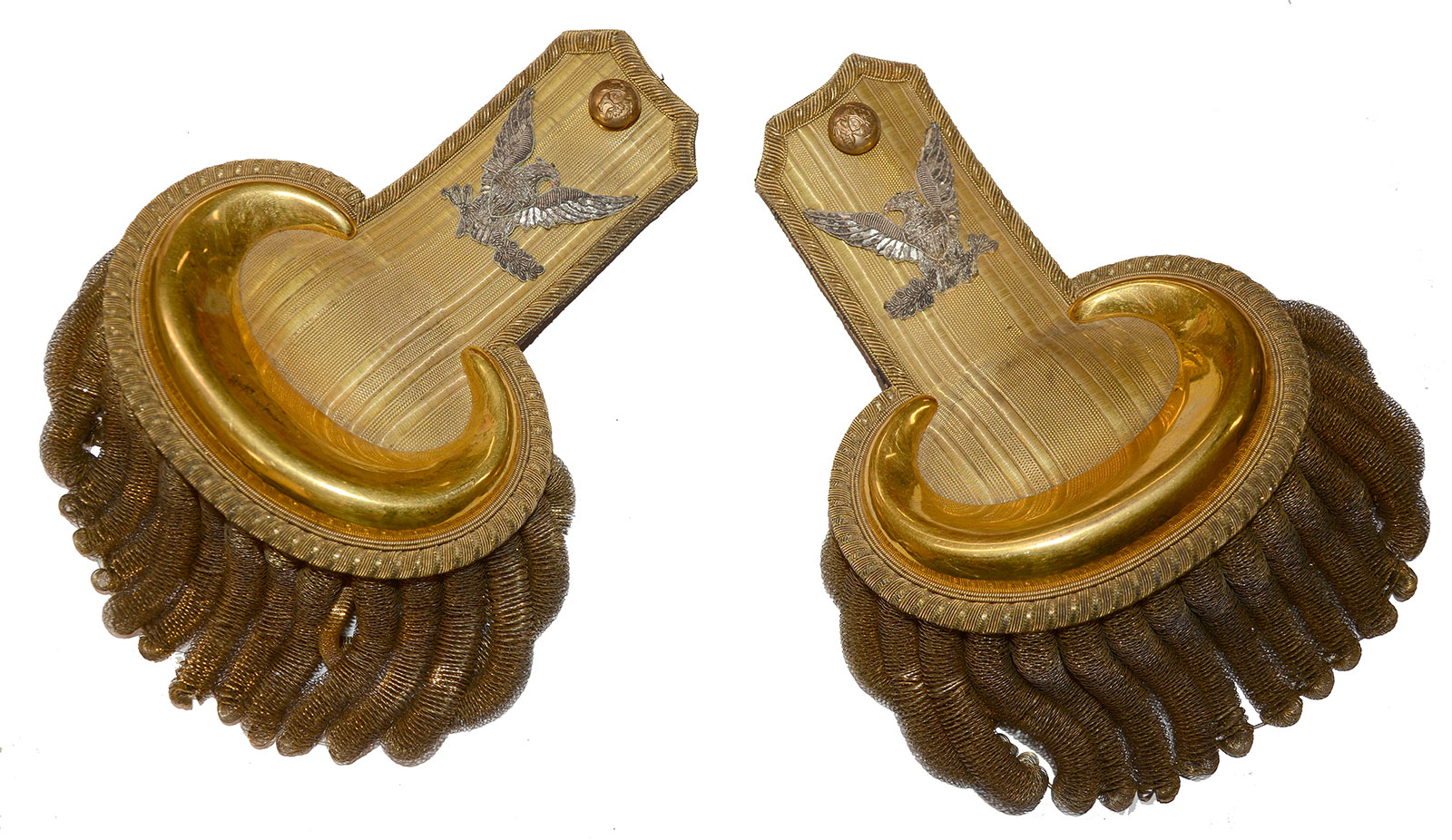
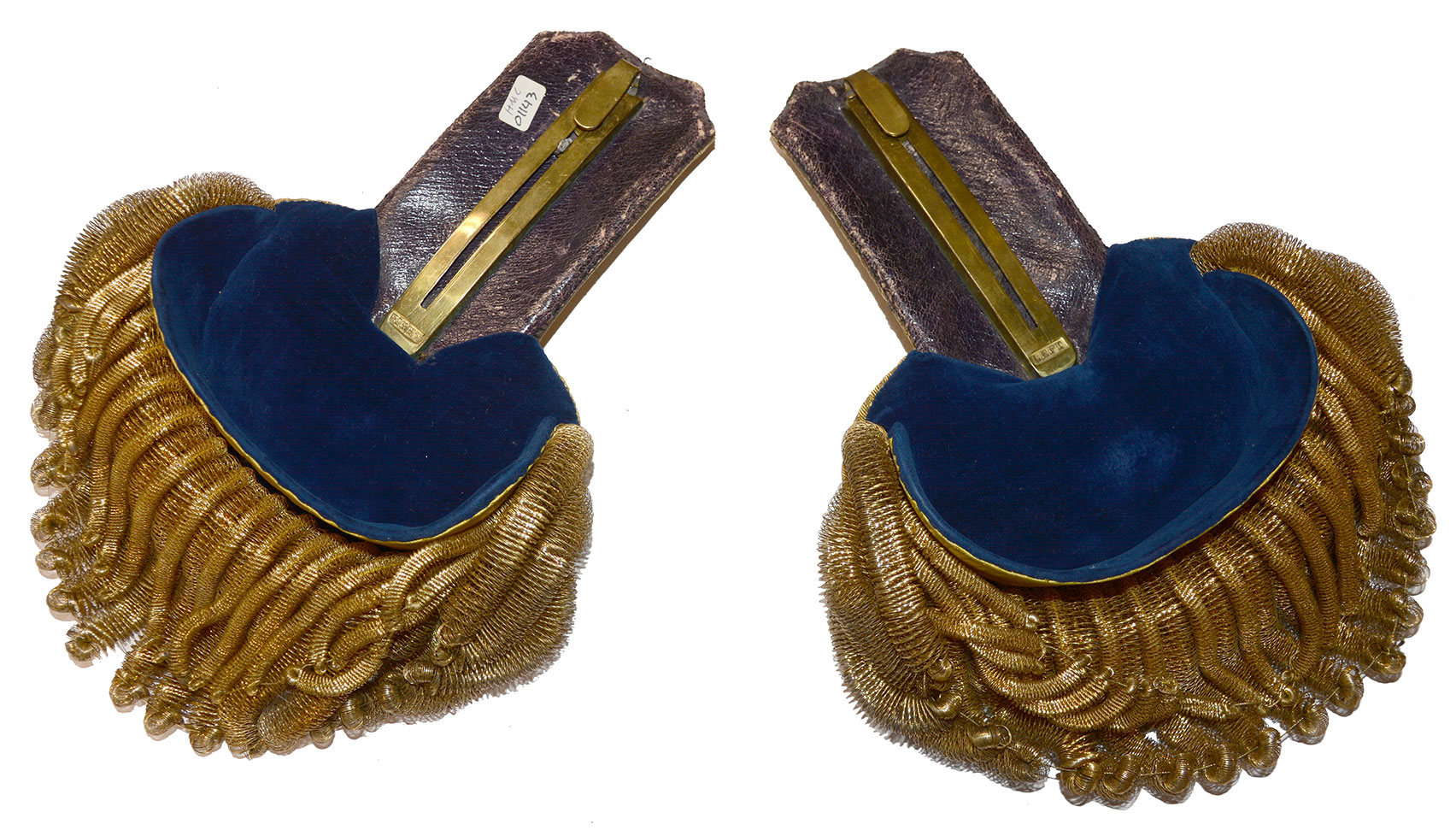
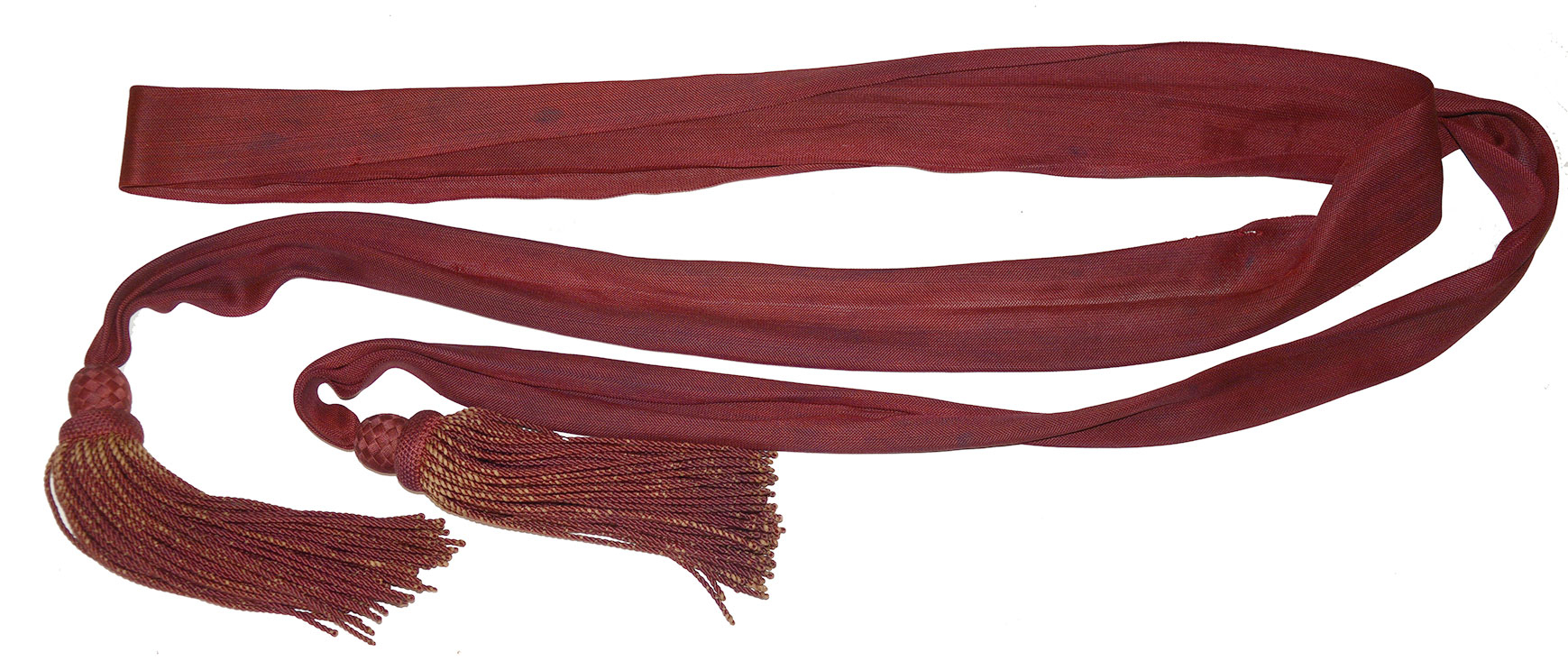
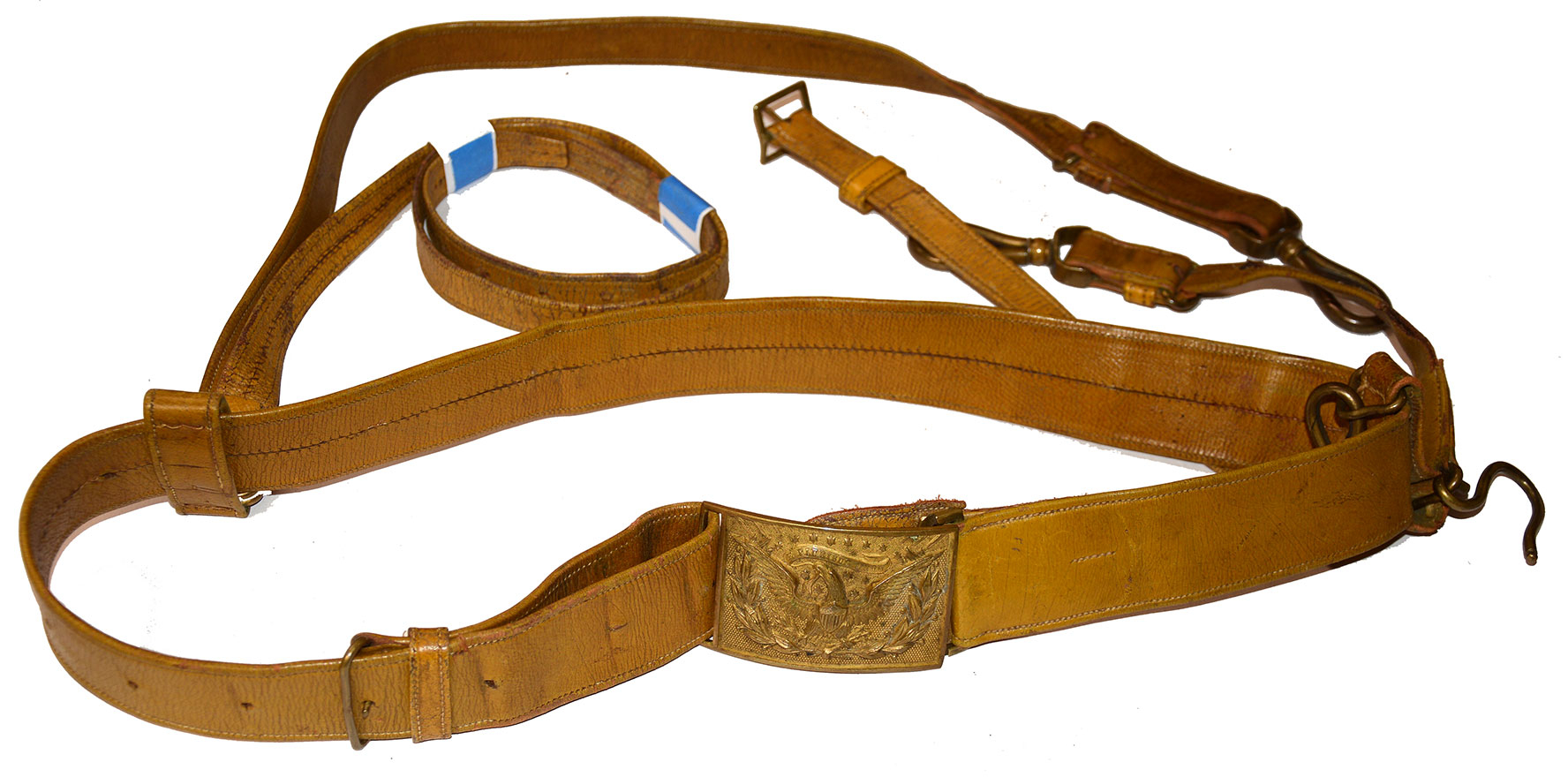
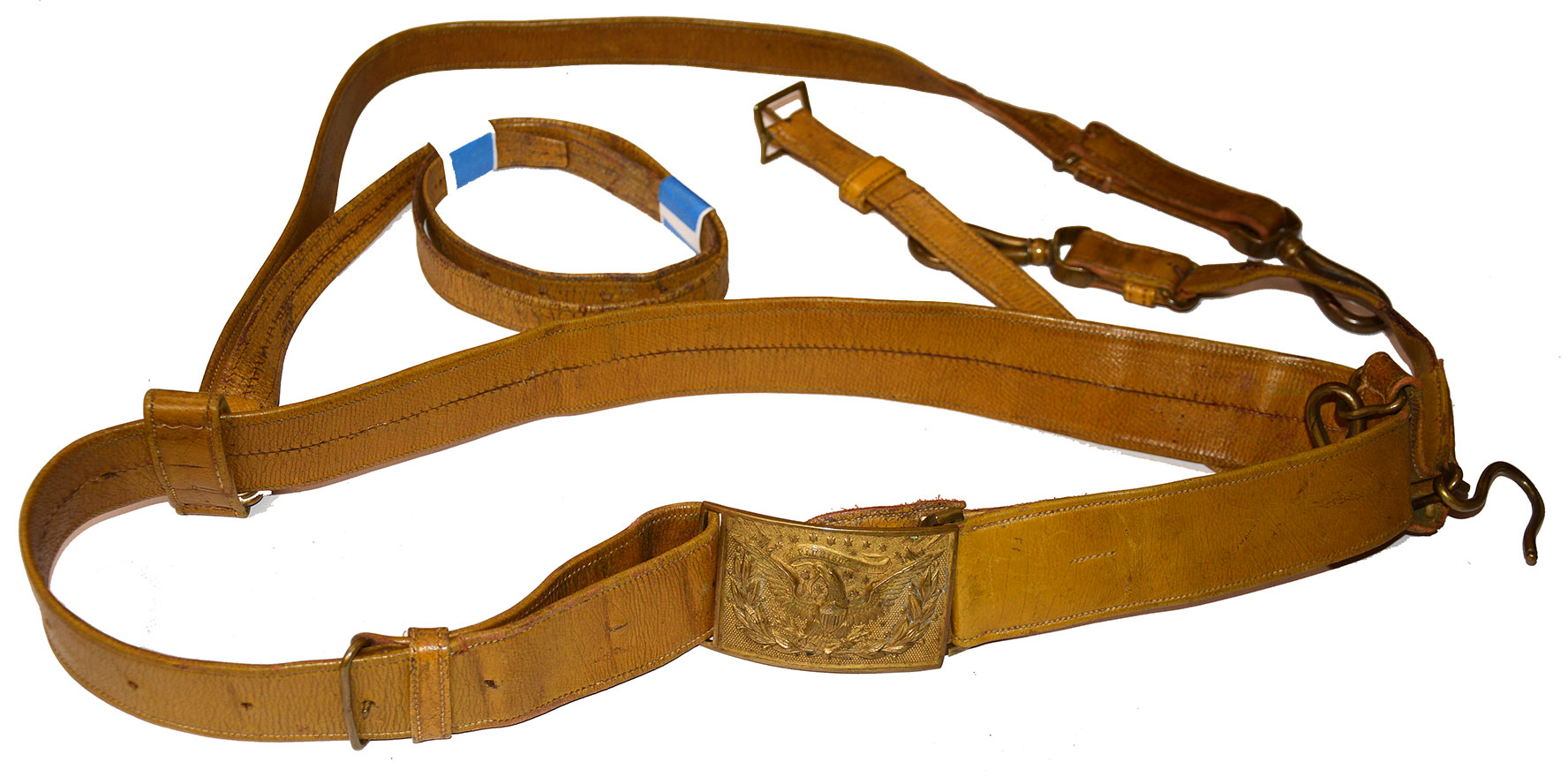
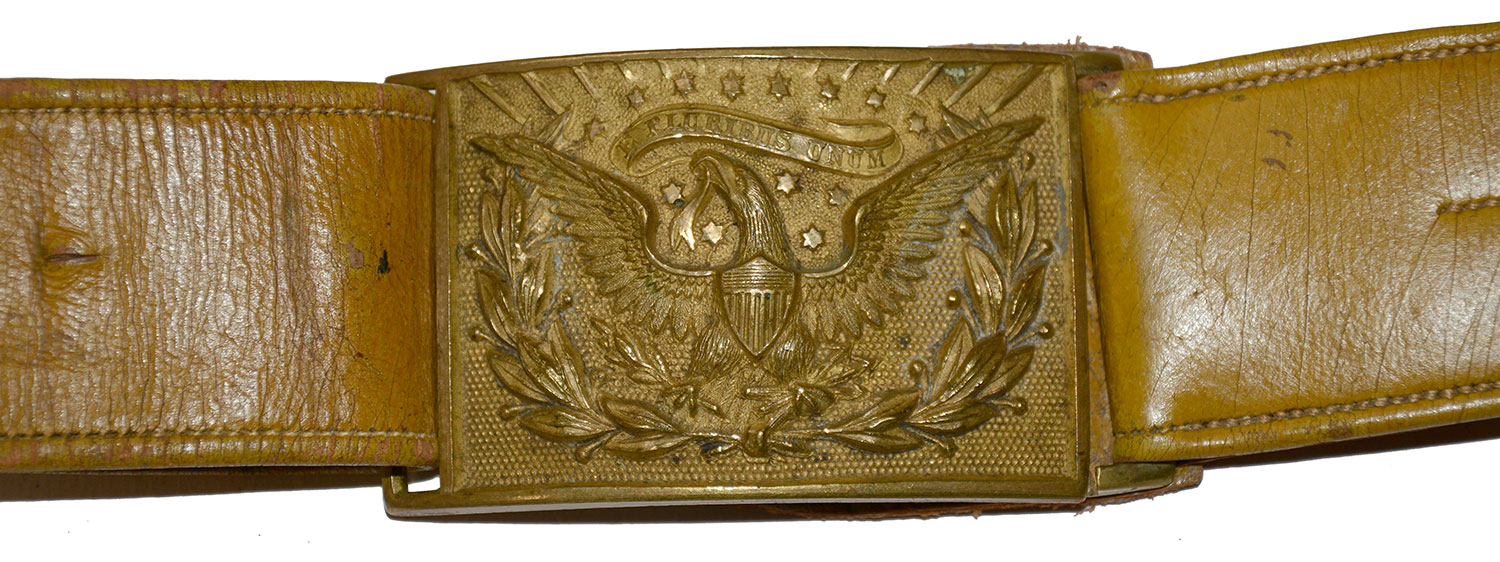
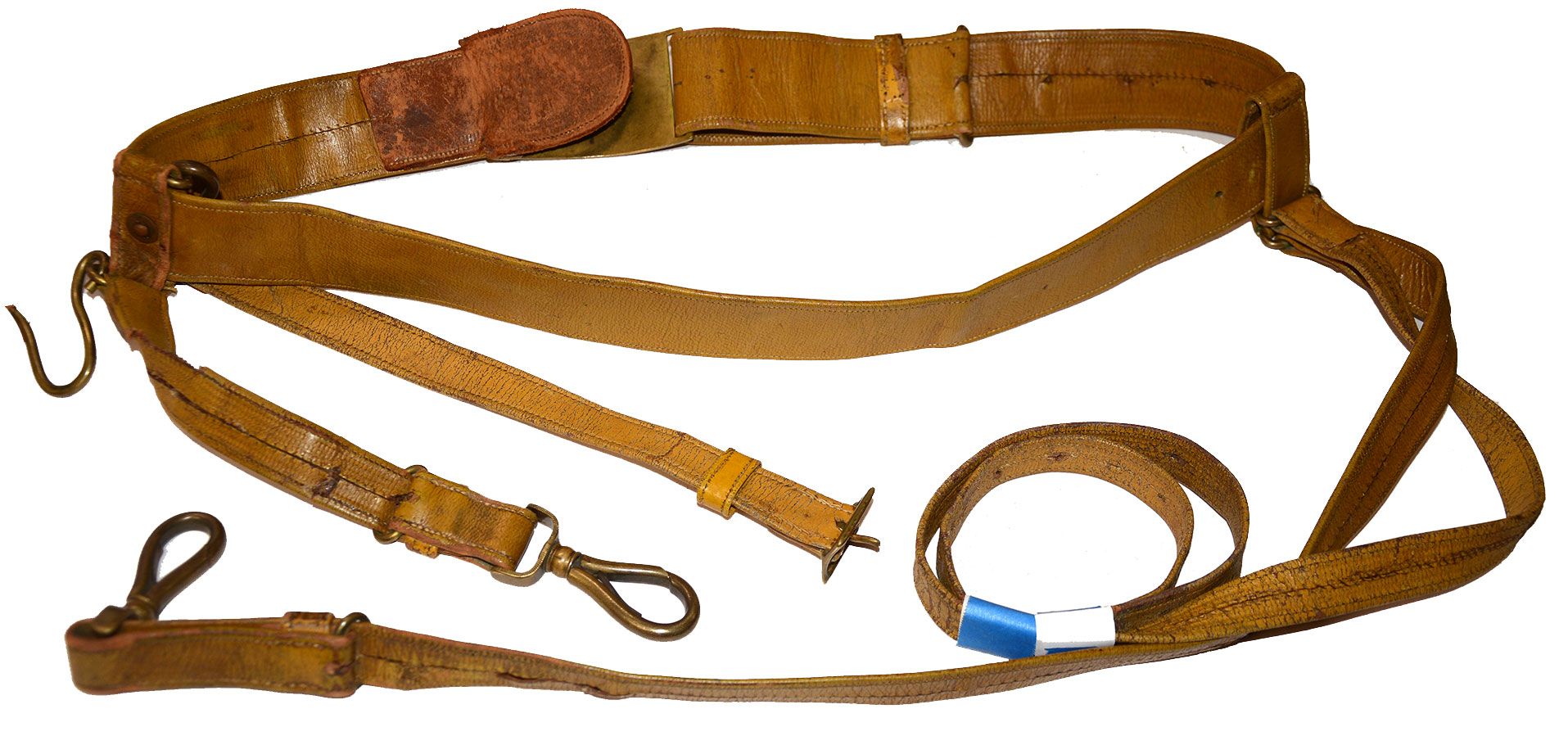
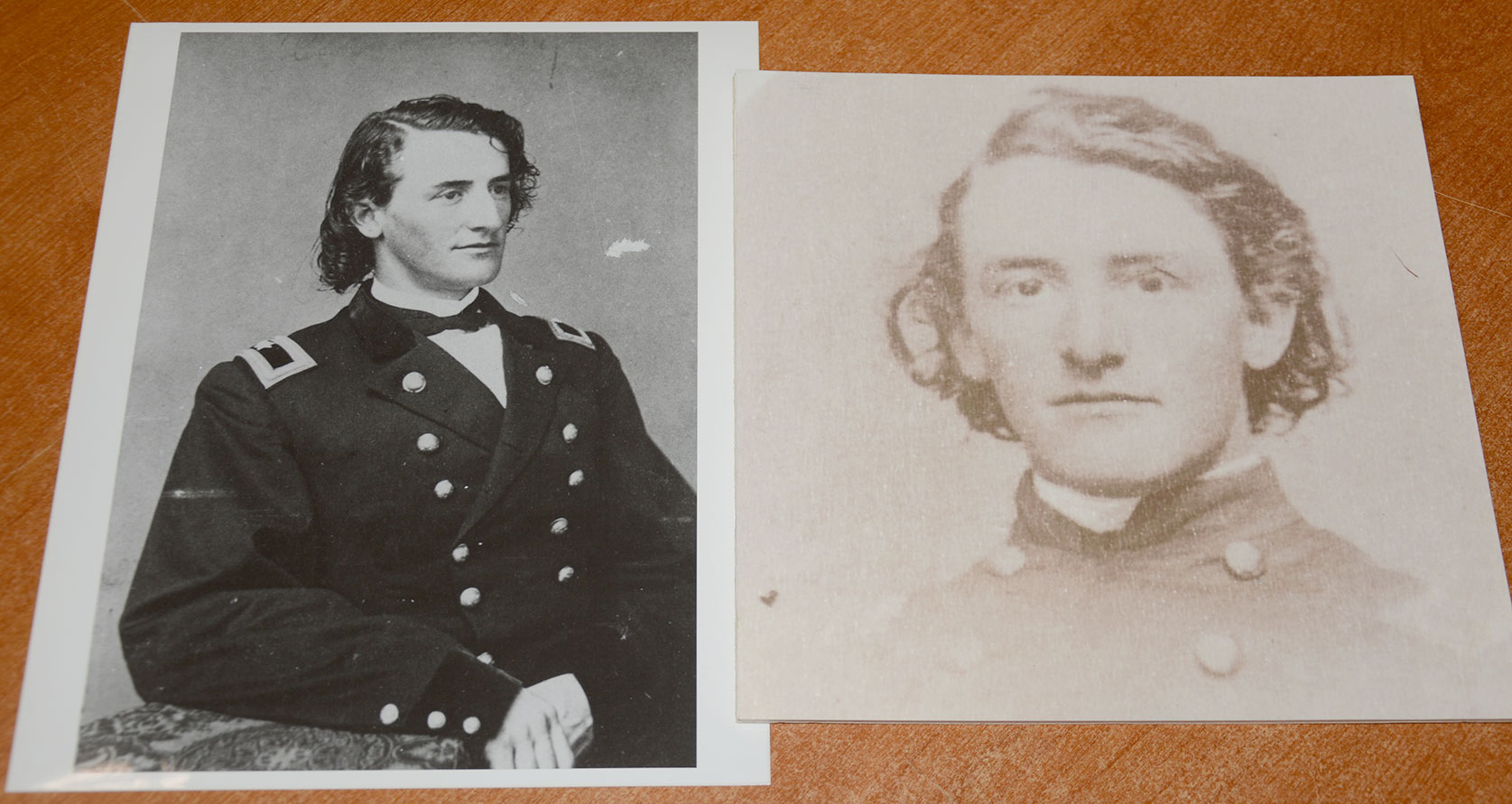
$15,000.00
Quantity Available: 1
Item Code: 1268-783
Shipping: Determined by Method & Location of buyer
To Order:
Call 717-334-0347,
Fax 717-334-5016, or E-mail
This set consists of a wonderful, identified Union cavalry colonel’s frock coat, epaulets, sash and sword belt, all in excellent condition and belonging to Col. E.H. Murray, 3rd Kentucky Cavalry, who saw action in Kentucky, Mississippi, Alabama, Tennessee, Georgia and the Carolinas, and was even tasked with brigade and division command at points in the Atlanta Campaign. Formerly in the collections of the Texas Civil War Museum, the coat is accompanied by a 2003 letter from uniform-authority Les Jensen, copies of Murray’s service records, his widow’s pension file, a print-out of references to Murray in the Official Records, copies of several short biographies relating to his military and political career, and copies of a photograph showing Murray seated, wearing what appears to be this very coat, but with brigadier general shoulder straps, indicating his brevet rank.
The frock coat has strong blue color and is solid. It generally follows the regulation form for a field grade officer, bearing two rows of seven buttons each, three small cuff buttons and four coat-size buttons on the rear waist and skirts, but has some personal touches as well: principally a stand and fall velvet-faced collar and velvet-faced three-button, functional cuffs, rising to a 5-1/2” point. The configuration of the collar and creasing of the lapels indicates Murray preferred to wear the coat with the upper lapels open, something seen in the photograph of him wearing general’s shoulder straps. All buttons are US General Staff pattern. The elbows have a fashionable billow, about 9-3/4” when laid flat. The interior is fitted with a cloth belt fastened at the front by two buttons to present a trim waistline that would be accentuated by the slight taper inwards of the buttons from top to bottom and a vertical dart running upward on each side from the waist.
The shoulders of the coat show some shadowing from shoulder straps and are fitted with standing studs and staples for attachment of epaulets. (The small stud is missing on the wearer’s right shoulder, but its crescent brass base plate is in place. The top of the stud appears to still be in the slotted bar used to attach the epaulet.) The coat shows virtually no moth damage, though the collar shows a couple of natural wear spots- a short ½” tear on the upper edge at center rear and a three more short spots also on the top edge, on the wearer’s left. The velvet, originally black, has oxidized to a pleasing, fairly even, medium brown. The interior is fully lined in green, quilted in the chest, with the sleeves lined in white. There is an interior pocket in the left breast and another in the left waist, and one in either tail of the skirts, opening to the inside. Murray’s name and what seems to be “76” appear on white strip sewn to the back of a hanging tab inside the collar. The white lining of the right sleeve has “1671” and what appears to be “y568” or “4568” in small ink characters, perhaps old collection or historical society inventory numbers. Jensen thought the velvet cuff facings may have been added after Murray’s brevet to General, but he does not say the same about the collar facing and acknowledges the button arrangement is that of a field officer, rather than a general officer, noting that his “brevet brigadier general rank leaves room for such anomalies,” though we might simply classify them as non-regulation.
The sash is regulation, crimson silk, about 4” wide and 136” long overall including 8-1/2” turk’s head knots and fringe at either end. There are no holes or runs, just some minor soiling and some wear to the color of the fringe where drapes over the lower edges of wood forms inside the turk’s head knots and present a raised ridge subject to rubbing when worn.
The epaulets are regulation field-grade officer’s epaulets, with a row of narrow inner fringe covered by an outer row of wider strands and embroidered silver bullion Colonel’s eagle insignia in place. Everything is in excellent condition. The brass crescents and gold embroidered straps with dead-and-bright borders show only the slightest age muting of color. The button/studs are both cavalry-officer Eagle-C buttons. Both silver eagles are secured with pins as is correct (for easy removal in cleaning.) The undersides of the straps are lined with brown leather, the pads with blue velvet, all in excellent condition, with the fastening bars intact, labelled left and right.
The belt is an impressive officer’s sewn bridle leather belt, about 1-3/4” wide, reflecting cavalry service with its mustard-yellow color. The regulation 1851 pattern eagle plate and its hasp, with a leather safe underneath, are in place. Both saber slings and a two-piece ¾” wide shoulder belt are in place. The forward belt loop for the short sling, carrying hook and forward section of the shoulder belt, is riveted in position. The rear loop, for the longer sling and the rear, billet portion of the shoulder belt, is freely moving. Both saber slings have their snap swivels in place and are adjusted for length by small brass buckles at the lower end. The forward end of the shoulder belt is fastened waist belt loop by a snap swivel at the front connecting with a brass wire loop in the leather belt loop and has a brass wire frame buckle and sliding loop at the upper end, about 12” long, not counting the snap swivel, etc. The rear portion of the belt is 36” long, sewn to a brass loop in the sliding rear belt loop, pointed at the other end and shows some wear to the fastening holes and finish from fastening and unfastening.
Murray was born in Kentucky in February 1843 but listed his age as 19 when he joined for duty and enrolled in the 3rd Kentucky Cavalry on Nov. 12, 1861. He had reportedly recruited a company and been elected captain, but was mustered in as major of the regiment to date Dec. 13. The regiment as whole did not muster in until Dec. 31, but elements of it saw action earlier, including Murray, who was in charge of a 168-man patrol when it was attacked near Sacramento, KY, on Dec. 28 by a Confederate force under Nathan Bedford Forrest and roughly handled, with losses ranging from 8 killed and 13 wounded or captured by one account, to loss of one-third of the detachment by another, with Murray having his horse shot out from under him, but capturing a replacement from a Confederate in the fighting. Following the Battle of Perryville, he was promoted colonel Aug. 18, 1862, and was frequently entrusted with higher commands: in the Atlanta Campaign he commanded the 3rd Brigade in Kilpatrick’s cavalry division, and had division command at Resaca while Kilpatrick was on detached duty. He was breveted Brigadier General for faithful and meritorious service as of March 25, 1865.
The 3rd Kentucky Cavalry had a very active service record. The summary alone in Dyer’s Compendium is extensive:
Action at Woodbury, Ky., October 29, 1861. Brownsville, Ky. November 21. Sacramento December 28. Moved to Nashville, Tenn., February 15-March 8, 1862, and to Savannah, Tenn., March 18-April 6. Battle of Shiloh April 6-7. Advance on and siege of Corinth, Miss., April 29-May 30. Pursuit to Booneville May 31-June 12. Buell's Campaign in Northern Alabama and Middle Tennessee June to August. Columbia and Kinderhook August 11 (Detachment). Mt. Pleasant August 14. March to Louisville, Ky., in pursuit of Bragg August 21-September 26. Mumfordsville, Ky., September 22. Ashbysburg September 25. New Haven September 29. Capture of 3rd Georgia Cavalry. Pursuit of Bragg into Kentucky October 1-22. Near Perryville October 6-7. Near Mountain Gap October 14 and 16. Expedition to Big Hill and Richmond October 21. March to Nashville, Tenn., October 25-November 7. Duty there till December 26. Reconnoissance to Franklin December 11-12. Wilson's Creek Pike December 11. Franklin December 12. Advance on Murfreesboro December 26-30. Lavergne December 26-27. Battle of Stone's River December 30-31, 1862, and January 1-3, 1863. Overall's Creek and Wilkinson's Cross Roads December 31. Lytle's Creek, Manchester Pike, January 5, 1863. Expedition to Franklin January 31-February 13. Unionville and Rover January 31. Rover February 13. Ordered to Kentucky February. Duty at Hopkinsville and Russellville and in District of West Kentucky till December, 1863. Action at Russellville June 28. Pursuit of Morgan July 2-26. Buffington Island, Ohio, July 19. Near Volney October 22. Lafayette November 27 (Detachment). Ordered to Nashville December 17. Smith's Expedition from Nashville, Tenn., to Corinth, Miss., December 28, 1863, to January 18, 1864. Ringgold, Ga., April 27. Reconnoissance from Ringgold, Ga., toward Tunnel Hill April 29. Atlanta (Ga.) Campaign May 1-September 8. Near Tunnel Hill and Ringgold Gap May 2. Near Nickajack Gap May 7. Near Resaca May 13. Battle of Resaca May 14-15. Calhoun May 15. Operations on line of Pumpkin Vine Creek and battles about Dallas, New Hope Church and Allatoona Hills May 25-June 5. Operations about Marietta and against Kenesaw Mountain June 10-July 2. Assault on Kenesaw June 27. On line of the Chattahoochie River July 2-12. Adairsville July 7. Siege of Atlanta July 22-August 25. Expedition to Pickers County July. Fairburn and Sandtown August 15. Kilpatrick's Raid around Atlanta August 18-22. Lovejoy Station August 20. Flank movement on Jonesboro August 25-30. Flint River Station August 30. Battle of Jonesboro August 31-September 1. Lovejoy Station September 2-6. Operations against Hood in North Georgia and North Alabama September 29-November 3. Camp Creek and near Atlanta September 30. Sweetwater and Noyes Creek near Powder Springs October 1-3. Van Wert October 9-10. March to the sea November 15-December 10. East Macon November 20. Griswoldsville November 22. Sylvan Grove November 27. Waynesboro November 27-28. Near Waynesboro November 28. Near Louisville November 30. Millen or Shady Grove December 1. Rocky Creek Church December 2. Waynesboro December 4. Siege of Savannah December 10-21. Campaign of the Carolinas January to April, 1865. Blacksville, S. C., February 7. Williston February 8. Johnston's Station February 10. About Columbia February 15-17. Lancaster February 27. Phillips' Cross Roads, N. C., March 4. Rockingham March 7. Monroe's Cross Roads March 10. Averysboro, Taylor's Hole Creek March 16. Battle of Bentonville March 19-21. Occupation of Goldsboro March 24. Morrisville and occupation of Raleigh April 13. Chapel Hill April 15. Bennett's House April 26. Surrender of Johnston and his army. Duty at Lexington, N. C., and in the Dept. of North Carolina till July. Mustered out July 15, 1865.
Their regimental losses were recorded as 3 officers and 41 men killed or mortally wounded. Officers and men who were wounded but recovered to some degree frequently numbered five times the combat fatalities. It was likely the case with the 3rd Kentucky as well.
After the war Murray became a lawyer and newspaper editor, was appointed U.S. Marshal for the District of Kentucky 1869-77 and then served as Governor of the Utah Territory from 1880-1886. (The city of Murray, Utah, is named after him.) Both appointments placed him in critical positions during political turmoil. He had married in 1876, had two children and was reportedly in California for a time after leaving Utah, but returned to Kentucky, died there 1896, and was buried at Arlington. [sr][ph:L]
~~~~~~~~~~~~~~~~~~~~~~~~~~~~~~~~~~~
THIS ITEM, AS WITH ALL OTHER ITEMS AVAILABLE ON OUR WEB SITE,
MAY BE PURCHASED THROUGH OUR LAYAWAY PROGRAM.
CLICK HERE FOR OUR POLICIES AND TERMS.
THANK YOU!
Inquire About FROCK COAT, SASH, EPAULETS AND SWORD BELT OF COLONEL AND BREVET BRIGADIER GENERAL ELI HOUSTON MURRAY, 3rd KENTUCKY CAVALRY
Most Popular
Historical Firearms Stolen From The National Civil War Museum In Harrisburg, Pa »
Theft From Gravesite Of Gen. John Reynolds »
Selection Of Unframed Prints By Don Troiani »
Fine Condition Brass Infantry Bugle Insignia »
Large English Bowie Knife With Sheath 1870’S – 1880’S »
Imported (Clauberg) Us Model 1860 Light Cavalry Officer's Saber »
featured item
AN ASSEMBLAGE BOTH WAR AND POST WAR OF A GETTYSBURG "WOLVERINE” – WILLIAM H. DUNN, 5TH AND 10TH MICHIGAN CAVALRY
William H. Dunn of Ganges, Michigan served in both the 5th and 10th Michigan Cavalry during the Civil War. He enlisted on Aug. 14, 1862 in Co. "I" 5th Michigan Cavalry. At Gettysburg Dunn, a trooper in the famous charge lead by Custer, gallantly… (1268-779). Learn More »


